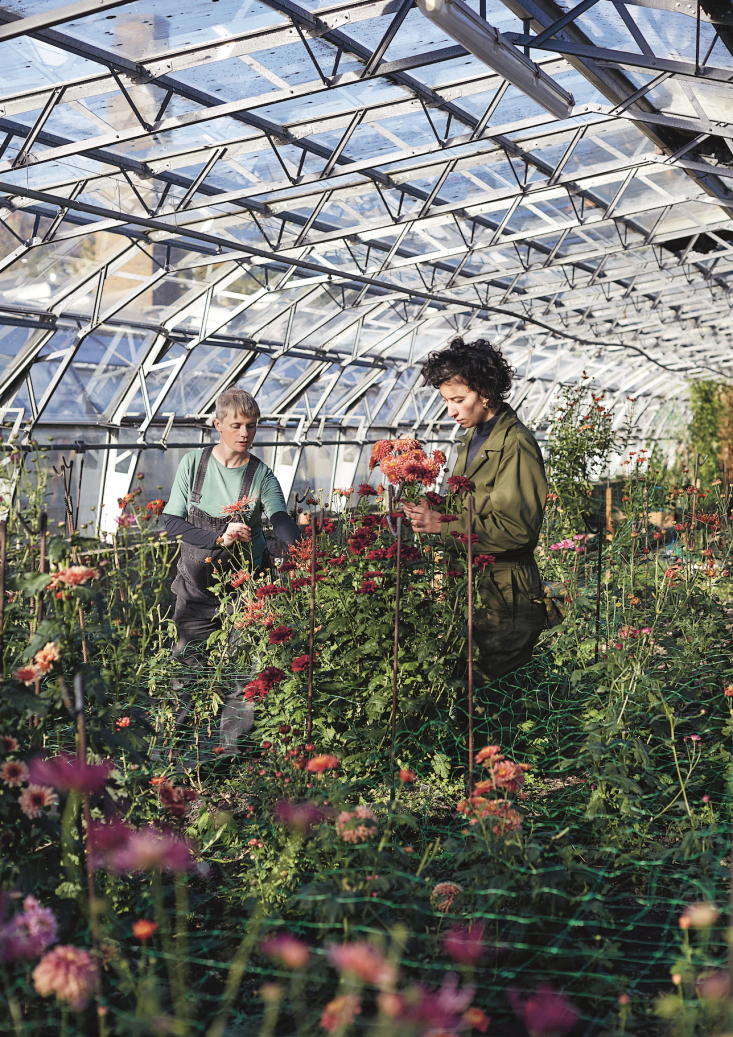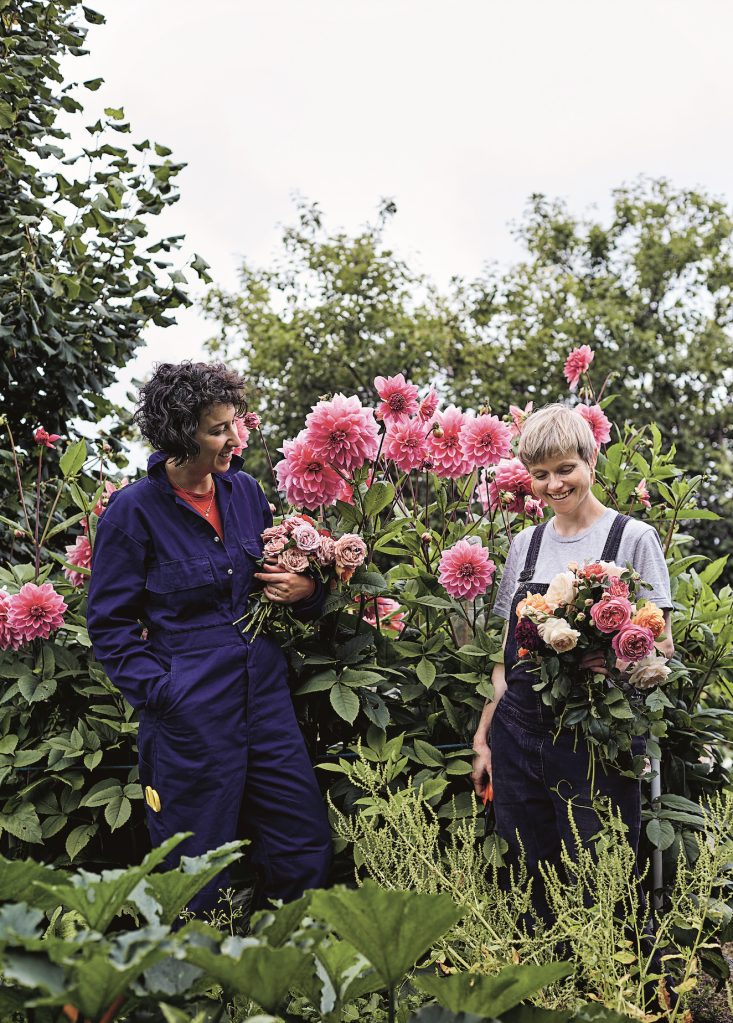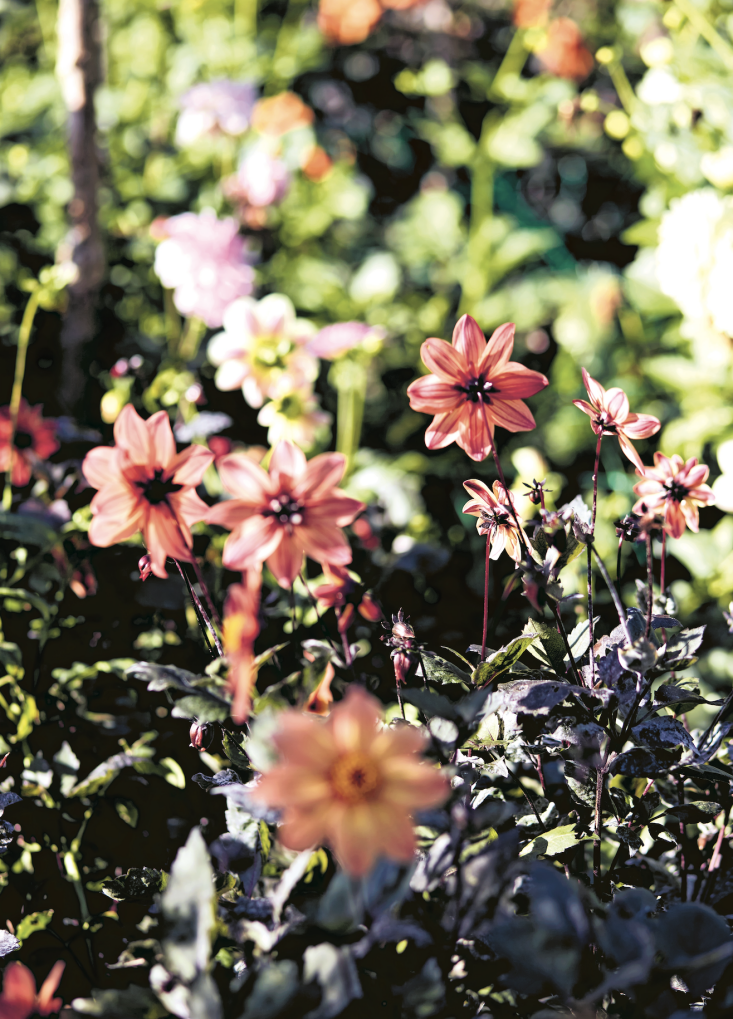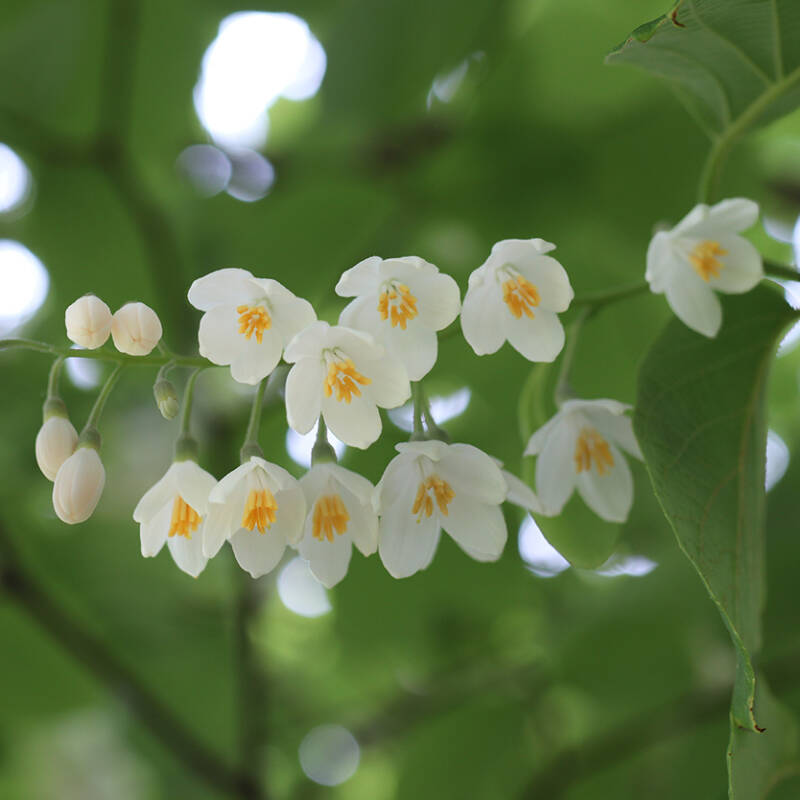Increasingly we think about where our flowers come from: where they were grown and who grew them, the carbon footprint they may have made, and the resources they may have used in order to reach us and beautify our homes for perhaps just a few days. In the wake of this shift, there has been a surge in local growers—flower farms in towns, cities, or rural areas—allowing lots more of us to buy flowers more sustainably. And these field-grown flowers are often much more beautiful, too.
Wolves Lane Flower Company is typical of this new breed of urban flower farm. Founders Camila Romain and Marianne Mogendorff are second-careerists, leaving their respective roles in fashion production and theater production, to follow their dream to get their hands in the soil and grow.
In 2017, they secured a scrap of land with an existing 40-meter greenhouse in North London and with no training or experience they started their quest to grow flowers as sustainably as they could, taking into consideration soil health and biodiversity. Their debut book, How To Grow the Flowers: A Sustainable Approach to Enjoying Flowers Through the Seasons (arriving in bookstores today) is the sum of everything they’ve learned so far. We take a closer look.
Photography by Aloha Shaw, from How to Grow Flowers.

The title of the book is a riff on Constance Spry’s seminal 1952 tome How to Do the Flowers, and so much of Spry’s trailblazing thinking (working seasonally, embracing natural forms) is woven into the ethos here. Each section of the book, which is arranged seasonally beginning in autumn, is a compilation of essential jobs as well as lessons learned: how to get your soil in tip top condition, the basics of seed saving and sowing, greener ways to deal with pests. Alongside all this vital intel are seasonal projects and compositions to make, such as a dahlia staircase or a long table runner filled with blooms.
But the book is really a manifesto for change in the flower industry, with some alarming statistics on the carbon footprint of the majority of store-bought flowers, which tend to be grown close to the equator and then shipped around the globe. “Over the last fifty years, industrial flower production and consumption have peaked with very little awareness of the costs to the environment,” they write. “We hope this book convinces you to swing the dial back.”
And in encouraging us all to grow our own—on any scale—Camila and Marianne also make a plea for that growing to be as planet-friendly as possible. They list the issues they faced on their own plot—the time it took to amend the soil and begin growing, the waves of pests that they dealt with, the failed crops. Yet despite the setbacks, working organically has had a much bigger net benefit for the whole ecosystem of their plot.

Alongside gentle encouragement to garden as sustainably and organically as possible, there are lots of really solid tips for anyone wanting to ensure a succession of free flowers and foliage through the year. These are tips that in the long term can save a lot of additional work, too, and much of this advice can be put into practice now in autumn, which is really the start of the gardener’s year.
First up, planting tulip bulbs in crates reduces a lot of the hard work of putting them into the ground—as well as the additional labor then to dig them up since few tulips will ever produce a flower as good as it does it its first season. If you’re growing not for cutting but simply a garden display, then the authors suggest putting tulips bulbs into a host of pots that can be moved around easily as different bulbs come into flower.
Narcissi give a whole lot more bang for your buck in the long term since they will not only flower year after year but many of them will multiply and naturalize too. Because they are so low-maintenance and undemanding, they can plug any gaps around the bases of hedges or trees and stay out of mind until they come into flower. “Invest in more unusual varieties of narcissi that you won’t be able to find in the supermarket aisles,” suggest the authors. “‘Delnashaugh’, ‘Pheasant Eye’ and ‘Replete’ are favourite varieties, but there are hundreds to choose from and virtually all smell delicious!”
In a similar way, by planting unfussy shrubs and trees you can create cutting material with almost no maintenance or ongoing cost. The authors suggest hydrangeas, crabapples, viburnum, blackthorn, cotoneaster, hawthorn, privet and snowberry. Many shrubs also come with the added bonus of spring blossom, flowers, and sometimes autumn fruits, too. Similarly, roses can also provide a wealth of delicious autumn cutting material with fat hips in shades from orange to deepest red.





See also:
- Ask the Expert: 7 Tips to Grow Cut Flowers in a Tiny Garden, from Floret Farm
- Enchanted Garden: At Home with Florist Brigitte Girling in the English Countryside
- Wedding Flowers: 10 Foraging Ideas for Bouquets and Arrangements









Have a Question or Comment About This Post?
Join the conversation